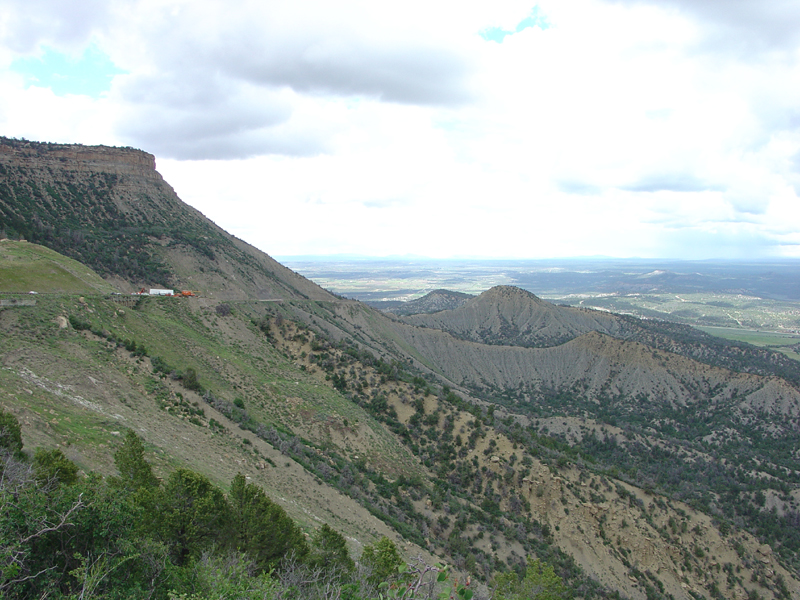
 |
| Landslide at Point Lookout. The main entrance road to Mesa Verde National Park climbs the escarpment of the East Rim of Mesa Verde overlooking Mancos Valley. Construction trailers and equipment are visible along the road near the landslide area. Rocks exposed in Mesa Verde National Park are mostly sedimentary rocks of Late Cretaceous age with a small scattering of Tertiary-age igneous intrusive rocks and Quaternary alluvial deposits (NPS, 2006). The sparsely vegetated gray mountainsides consist of the Mancos Shale. The Mancos Shale represents muddy sediments deposited in the Western Interior Seaway—a great shallow inland seaway that once covered much of central North America in the Late Cretaceous Period. The shallow seaway extended from the Cordilleran volcanic ranges along the west (Mexico, California and northward to Alaska) to the mid continent in the Mississippi Valley region. It also extended from the Gulf of Mexico northward to the Arctic Ocean. Fossils found in the Mancos Shale include sea life from about 80 million years ago including ammonites, marine reptiles, fish, and other marine species that are now extinct (Kauffman, 1977). With uplift and erosion through Tertiary time to the present, the landscape has evolved, and continues to change. The soft, marine shales of the Mancos rapidly weather and erode and are prone to landsliding, such as at this massive landslide complex near the Mancos Valley Overlook (see Carrara, 2009). Sandstone layers of the Late Cretaceous Point Lookout Sandstone crops out at the top of the mesa. The rock layers gently dip to the south at a low angle (Mesa Verde is therefore technically not a mesa, but rather is a cuesta). The high point in the park is Point Lookout at 8,258 feet. |